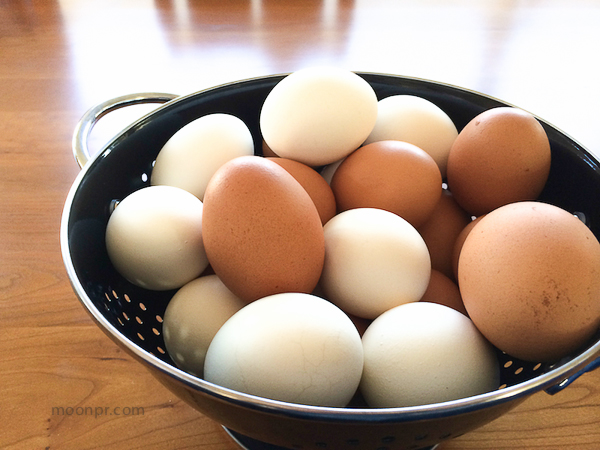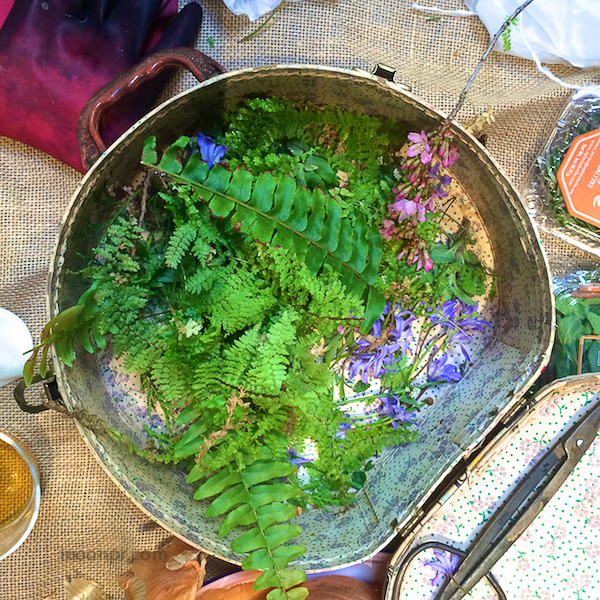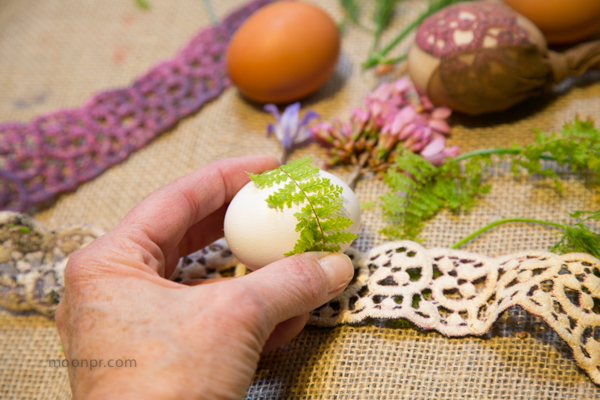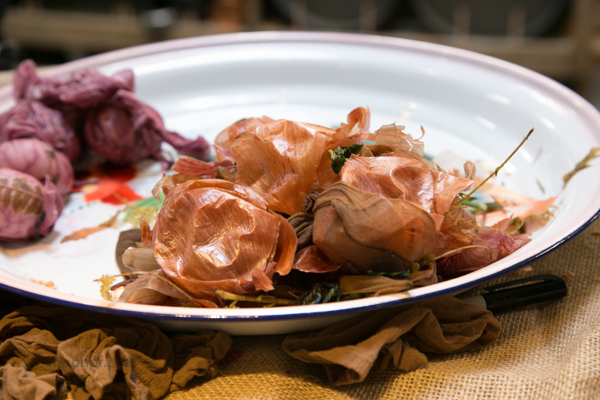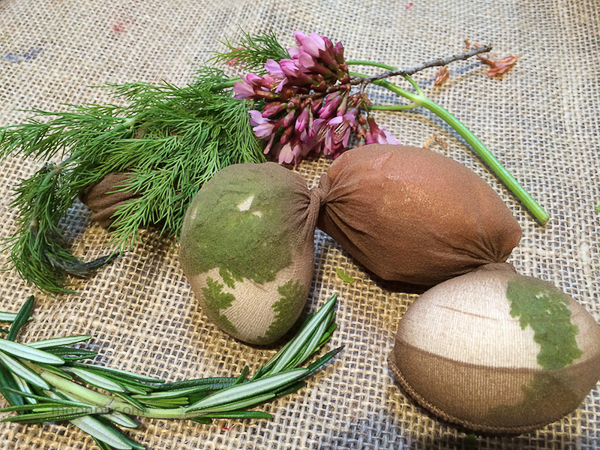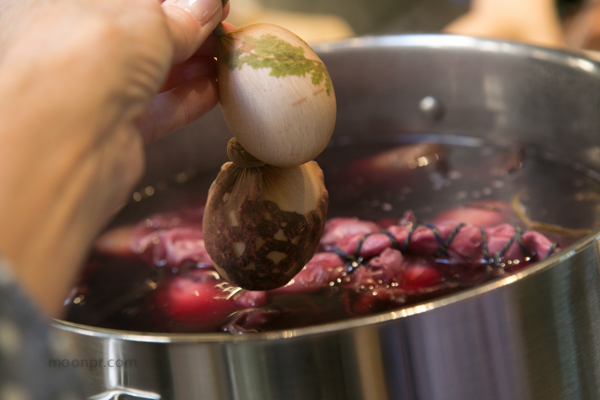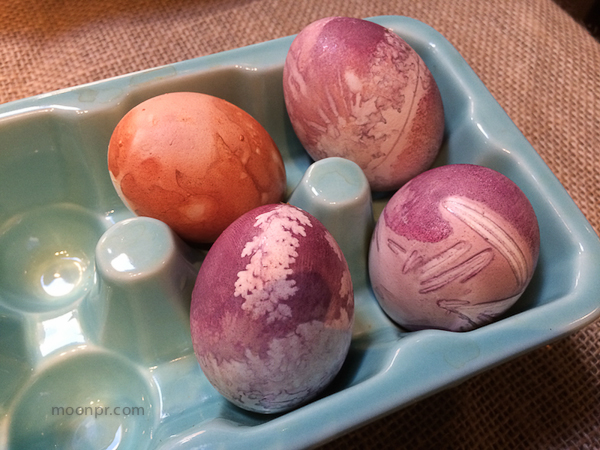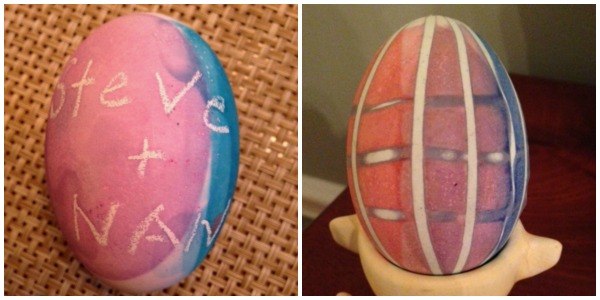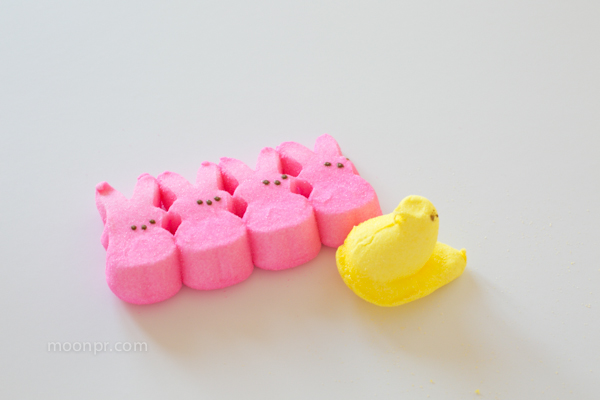April is a busy month: Easter, Passover, Earth Day, and spring break.
It might seem over-the-top, but I started dyeing Easter eggs again in my adult years. Growing up, springtime in our family meant Easter egg baskets, patent leather shoes and beautiful hand-sewn dresses by my mother. Yes, Easter eggs and springtime connect me deeply to my past.
Today I dyed eggs with a new friend, in accordance with the Latvian tradition. Their tradition is to dye eggs with onion skins, using no artificial ingredients. We then wrapped our eggs with silk, dropping the eggs in hot water. Many Latvian families save yellow onion skins all year to get ready for Easter egg dyeing. Some of my photographs follow. Thank you Terrain Westport and the uber-artistic Nancy Geaney of Vagabond’s Daughter.
There are a few Latvian traditions for dyeing eggs. Pressing small leaves or flower petals on the egg before layering onions on top can enhance the look. Today we had two pots of liquid, one with blackberries and the second with an onion dye bath for egg dipping. The onion skins produced plain darker colors.
Here is a quick history lesson on decorated eggs: In Africa, engraved ostrich eggs have been found that are up to 60,000 years old. Ornate ostrich eggs were placed on graves of ancient Egyptians and Sumerians. What does that have to do with Easter? Not much. Decorating an egg specifically for Easter started with the early Christians of Mesopotamia. The Christian Church made the custom official when it adopted it in A.D. 1610. It seems I’m not the only one connecting Easter eggs with memories from the past.
Isn’t it amazing how far traditions extend?
My friend Lori and her daughter Phoebe invited me to an egg dyeing party back in 2009. The eggs were hand “blown out” by her sister, Jana. How impressed was I when Lori still had our decorated eggs, five years later! Mine is on the left and Lori decorated the one on the right, very fancy using rubber bands.
Easter egg traditions are vibrant with variety. One that caught my eye this year is the German tradition of decorating trees and bushes with eggs. Take a look at Volker Kraft’s spectacular display—that is 10,000 eggs! I’m in awe of this man.
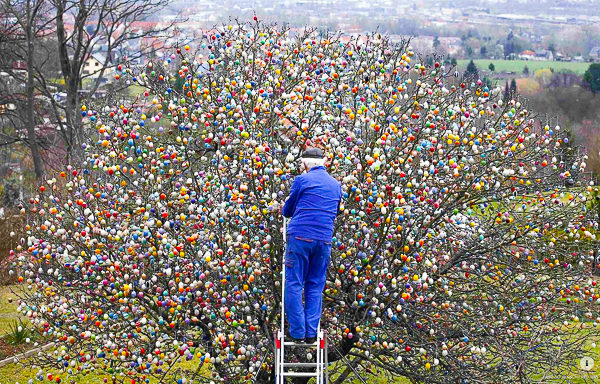
Since 1965 Volker and his wife Christa decorate a tree with their collection of 10,000 hand-painted Easter eggs. Photo Fabrizio Bensch for Reuters as seen on NBC News.
No springtime blog is complete without peeps.
PS. Easter is REALLY not complete without pink sheep. Enjoy your Spring!
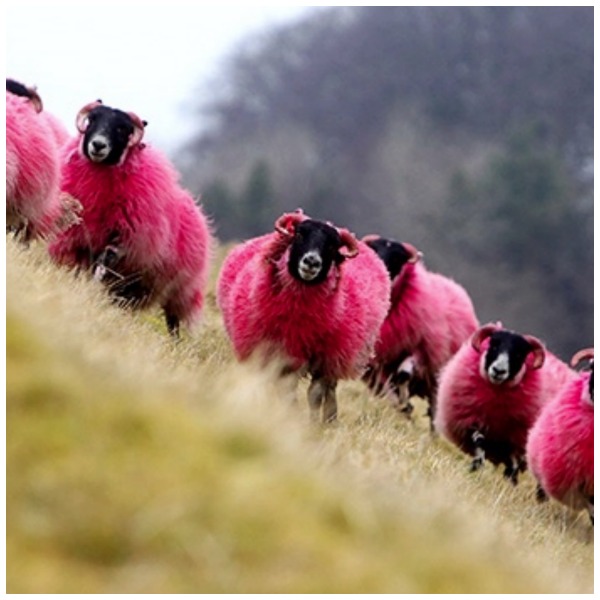
Freshly dyed sheep are in plain view in Bathgate, Scotland. Non-Toxic dye is used by this fun loving sheep farmer. Photographer unknown.
